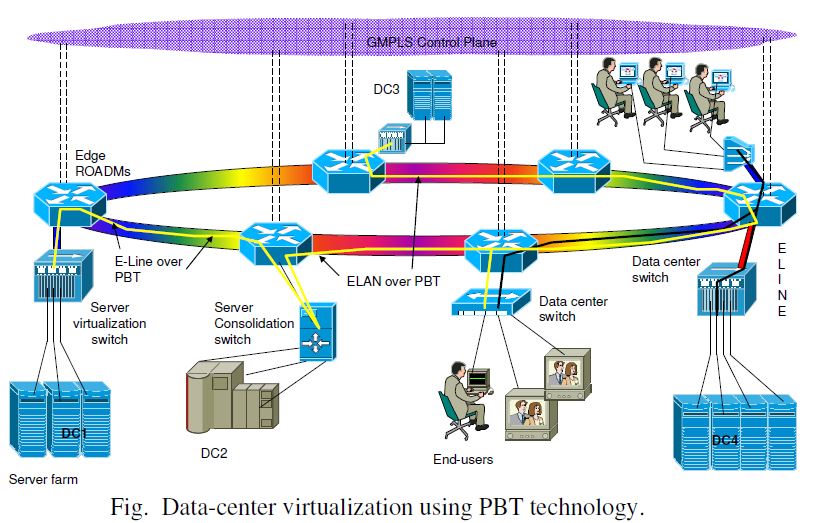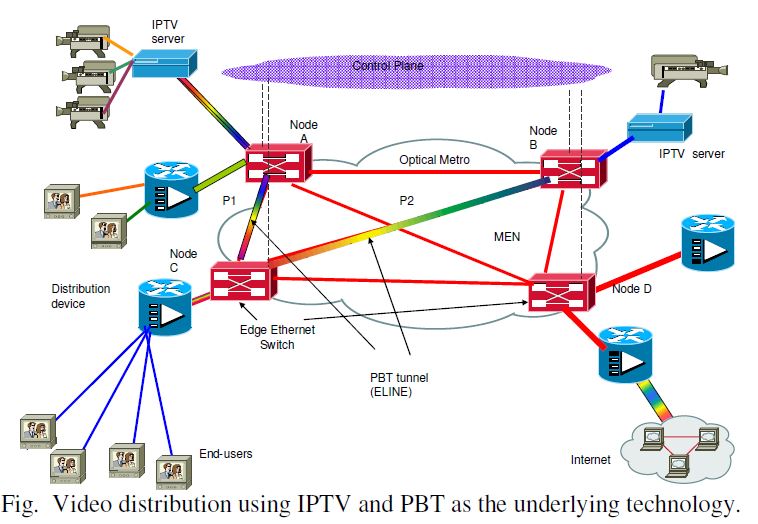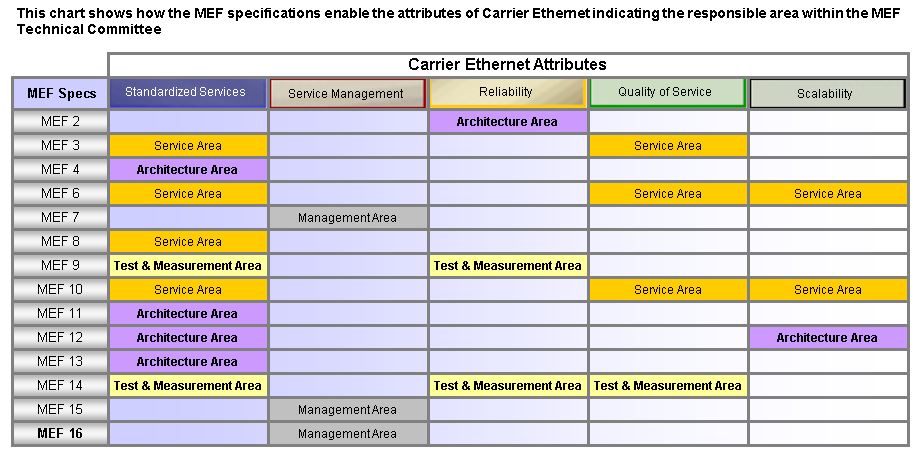Last Updated: August 16, 2025
5 min read
Carrier Ethernet: A Formal Definition
The MEF (Metro Ethernet Forum) has defined Carrier Ethernet as the “ubiquitous, standardized, Carrier-class service defined by five attributes that distinguish Carrier Ethernet from the familiar LAN based Ethernet.” As depicted in Figure , these five attributes, in no particular order, are
1. Standardized services
•E-Line, E-LAN provide transparent, private line, virtual private line and LAN services
•A ubiquitous service providing globally & locally via standardized equipment
•Requires no changes to customer LAN equipment or networks and accommodates existing network connectivity such as, time-sensitive, TDM traffic and signaling
•Ideally suited to converged voice, video & data networks
•Wide choice and granularity of bandwidth and quality of service options
2. Scalability
•The ability for millions to use a network service that is ideal for the widest variety of business, information, communications and entertainment applications with voice, video and data
•Spans Access & Metro to National & Global Services over a wide variety of physical infrastructures implemented by a wide range of Service Providers
•Scalability of bandwidth from 1Mbps to 10Gbps and beyond, in granular increments
3. Reliability
•The ability for the network to detect & recover from incidents without impacting users
•Meeting the most demanding quality and availability requirements
•Rapid recovery time when problems do occur, as low as 50ms
4. Quality of Service (QoS)
•Wide choice and granularity of bandwidth and quality of service options
•Service Level Agreements (SLAs) that deliver end-to-end performance matching the requirements for voice, video and data over converged business and residential networks
•Provisioning via SLAs that provide end-to-end performance based on CIR, frame loss, delay and delay variation characteristics
5. Service management
•The ability to monitor, diagnose and centrally manage the network, using standards-based vendor independent implementations
•Carrier-class OAM
•Rapid service provisioning
What is Carrier Ethernet?
Carrier Ethernet essentially augments traditional Ethernet, optimized for LAN deployment,with Carrier-class capabilities which make it optimal for deployment in Service Provider Access/Metro Area Networks and beyond, to the Wide Area Network. And conversely,from an end-user (enterprise) standpoint, Carrier Ethernet is a service that not only provides a standard Ethernet (or for that matter, a standardized non-Ethernet) hand-off but also provides the robustness, deterministic performance, management, and flexibility expected of Carrier-class services.
Carrier Ethernet Architecture
Data moves from UNI to UNI across “the network” with a layered architecture.
When traffic moves between ETH domains is does so at the TRAN layer. This allows Carrier Ethernet traffic to be
agnostic to the networks that it traverses



MEF Carrier Ethernet Terminology
•The User Network Interface (UNI)
–The UNI is always provided by the Service Provider
–The UNI in a Carrier Ethernet Network is a physical Ethernet Interface at operating speeds 10Mbs, 100Mbps, 1Gbps or 10Gbps
•Ethernet Virtual Connection (EVC)
–Service container
–Connects two or more subscriber sites (UNI’s)
–An association of two or more UNIs
–Prevents data transfer between sites that are not part of the same EVC
–Three types of EVCs
•Point-to-Point
•Multipoint-to-Multipoint
•Rooted Multipoint
–Can be bundled or multiplexed on the same UNI
–Defined in MEF 10.2 technical specification
Carrier Ethernet Terminology
•UNI Type I
–A UNI compliant with MEF 13
–Manually Configurable
•UNI Type II
–Supports E-Tree
–Support service OAM, link protection
–Automatically Configurable via E-LMI
–Manageable via OAM
•Network to Network Interface (NNI)
–Network to Network Interface between distinct MEN operated by one or more carriers
–An active project of the MEF
•Metro Ethernet Network (MEN)
–An Ethernet transport network connecting user end-points
(Expanded to Access and Global networks in addition to the original Metro Network meaning)
Carrier Ethernet Service Types
Services Using E-Line Service Type
Ethernet Private Line (EPL)
•Replaces a TDM Private line
•Port-based service with single service (EVC) across dedicated UNIs providing site-to-site connectivity
•Typically delivered over SDH (Ethernet over SDH)
•Most popular Ethernet service due to its simplicity
Ethernet Virtual Private Line (EVPL)
•Replaces Frame Relay or ATM L2 VPN services
–To deliver higher bandwidth, end-to-end services
•Enables multiple services (EVCs) to be delivered over single physical connection (UNI) to customer premises
•Supports “hub & spoke” connectivity via Service Multiplexed UNI at hub site
–Similar to Frame Relay or Private Line hub and spoke deployments
Services Using E-LAN Service Type
•EP-LAN: Each UNI dedicated to the EP-LAN service. Example use is Transparent LAN
•EVP-LAN: Service Multiplexing allowed at each UNI. Example use is Internet access and corporate VPN via one UNI
Services Using E-Tree Service Type
EP-Tree and EVP-Tree: Both allow root – root and root – leaf communication but not leaf – leaf communication.
•EP-Tree requires dedication of the UNIs to the single EP-Tree service
•EVP-Tree allows each UNI to be support multiple simultaneous services at the cost of more complex configuration that EP-Tree
APPLICATION OF CARRIER ETHERNET


The Standardization of Services: Approved MEF Specifications
•MEF 2 Requirements and Framework for Ethernet Service Protection
•MEF 3 Circuit Emulation Service Definitions, Framework and Requirements in Metro Ethernet Networks
•MEF 4 Metro Ethernet Network Architecture Framework
Part 1: Generic Framework
•MEF 6 Metro Ethernet Services Definitions Phase I
•MEF 7 EMS-NMS Information Model
•MEF 8 Implementation Agreement for the Emulation of PDH Circuits over Metro Ethernet Networks
•MEF 9 Abstract Test Suite for Ethernet Services at the UNI
•MEF 10 Ethernet Services Attributes Phase I
•MEF 11 User Network Interface (UNI) Requirements and Framework
•MEF 12 Metro Ethernet Network Architecture Framework
Part 2: Ethernet Services Layer
•MEF 13 User Network Interface (UNI) Type 1 Implementation Agreement
•MEF 14 Abstract Test Suite for Traffic Management Phase 1
•MEF 15 Requirements for Management of Metro Ethernet
Phase 1 Network Elements
•MEF 16 Ethernet Local Management Interface
How the MEF Specifications Enable Carrier Ethernet

Unlock Premium Content
Join over 400K+ optical network professionals worldwide. Access premium courses, advanced engineering tools, and exclusive industry insights.
Premium Courses
Professional Tools
Expert Community
Already have an account?
Log in here






















